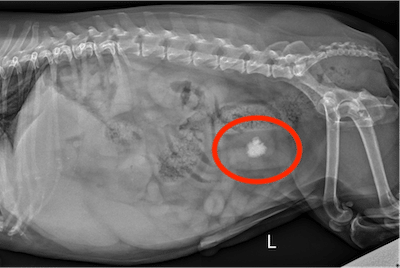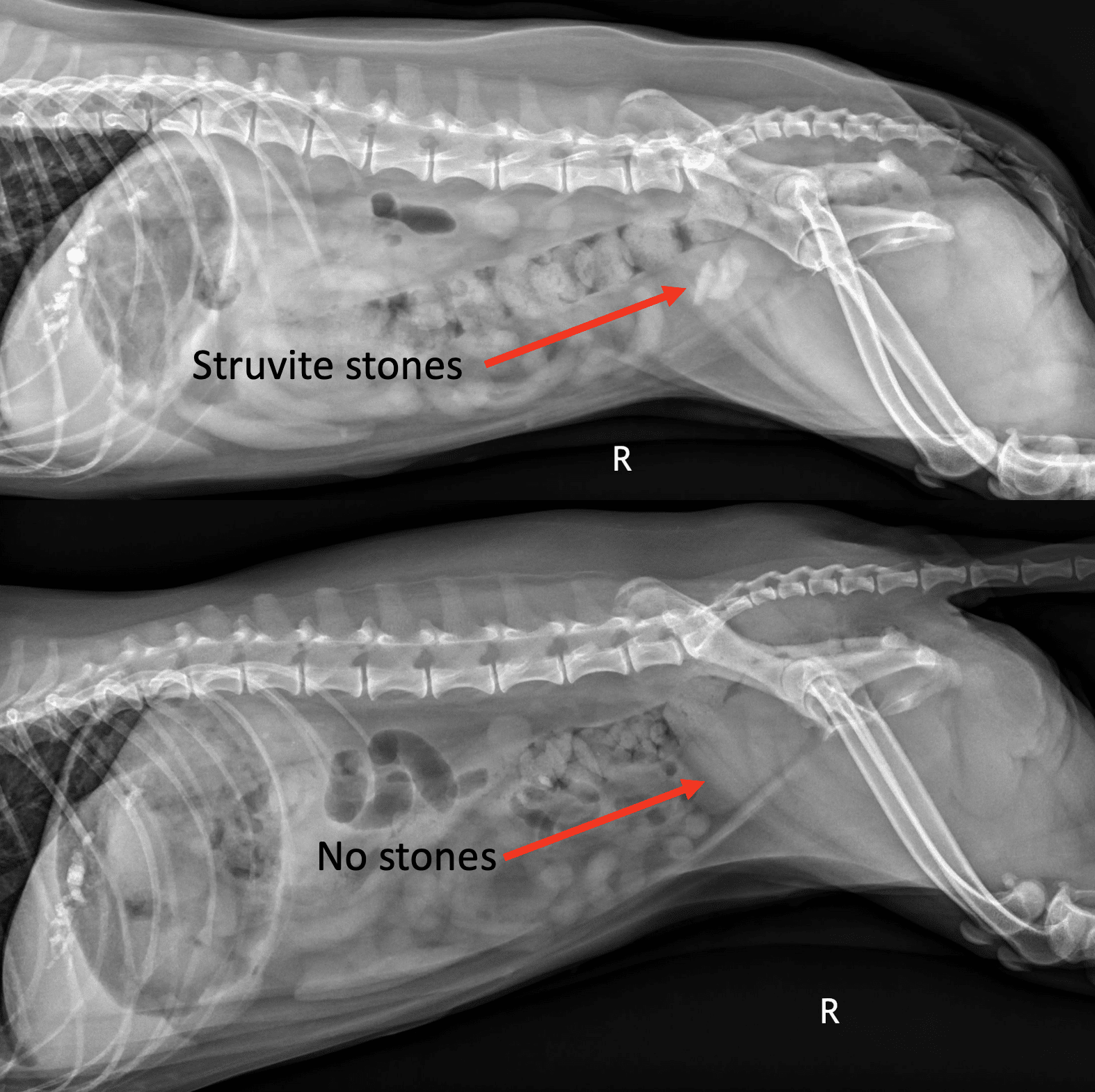

Bladder stones are a common medical problem in dogs. Some dogs are more prone to stones than others; some dogs are just unlucky. Bladder stones are made of mineral excreted in the urine. When the minerals reach high levels, they coalesce into stones. There are four main types of bladder stones, each with a different mineral composition: struvite, calcium oxalate, cysteine and urate. The University of Minnesota Urolith Center has nice photos of each of these different types of bladder stones. I’ll discuss bladder stones and their implications in today’s blogpost.
Types of Bladder Stones and Which Dogs Are At-Risk
- Urate | Dalmatians can be born with a metabolic abnormality that results in production of stones made from urate. The same type of stone occurs in dogs with liver shunts.
- Cysteine | The formation of cysteine stones is due to a genetic mutation. Two different genetic mutations leading to cysteine stones have been found in a variety of purebred dogs, including Labrador retrievers and Australian cattle dogs. Male English bulldogs have hormone-dependent cysteine stones and neutering surgery helps prevent future stones.
- Calcium Oxalate | Calcium oxalate stones have been associated with excessive excretion of calcium in the urine, high blood calcium levels and a genetic predisposition in Schnauzers and small breed dogs, but in most dogs, the cause is unknown.
- Struvite | Struvite stones are the most common type of stone seen in dogs.

Bladder Stones Caused by Urinary Tract Infection
Struvite stones are also called triple phosphate stones. One reason these stones are so common is that these stones often form as the result of a urinary tract infection. Infections with staph bacteria make the urine more alkaline and cause phosphate stone formation. This is why veterinarians recommend x-rays and/or abdominal ultrasound in dogs with multiple urinary infections. These stones can often be dissolved by treating with antibiotics and a special diet rather than surgical removal.
Bladder Stones Can Cause a Urinary Blockage
When a dog has bladder stones, they often have clinical signs that look like a urinary tract infection: frequent urination, blood in the urine and passing just a few drops of urine at a time. The most serious consequence of bladder stones is urinary obstruction. This is more common in male dogs because the tube from their bladder to the outside (the urethra) is smaller and longer than in females. If your dog is straining to urinate and no urine is produced, a trip to the animal ER is essential.
Read a prior blogpost to learn about the treatment options available for bladder stones.
Tags:
bladder stones, calcium oxalate, cysteine, dogs, struvite, urate, urinary blockage, urinary tract infection, uroliths, UTI,






